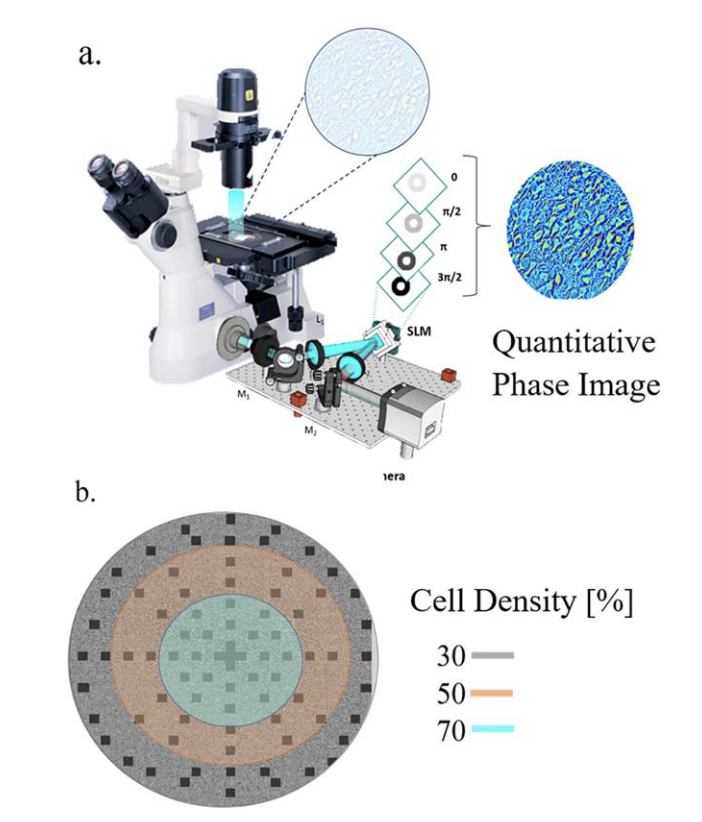CELL DENSITY MODULATES INTRACELLULAR MASS TRANSPORT IN NEURAL NETWORKS
Patricia Cintora,1 Jyothi Arikkath,2 Mikhail Kandel,3 Gabriel Popescu,3 Catherine Best-Popescu1 *
ISAC, Cytometry Part A 2017
![]()

In order to fully understand brain connectivity and elucidate the mechanisms involved in central nervous system disease, the field of neuroscience depends on quantitative studies of neuronal structure and function. Cell morphology and neurite (axonal and dendritic) arborization are typically studied by immunohistochemical and fluorescence techniques. However, dry mass content and intracellular mass transport rates have largely been under-investigated given the inherent difficulties in their measurement. Here, spatial light interference microscopy (SLIM) and dispersion-relation phase spectroscopy (DPS) were used to measure pathlength fluctuations that report on the dry mass and transport within cultured primary neurons across low, medium, and high cell density conditions. It was found that cell density (confluence) affects significantly both the growth rate and mass transport. The analysis method is label-free and does not require neuronal tracing, particle tracking, or neuron reconstruction. Since SLIM can upgrade any existing phase contrast microscope and the imaging and analysis are high-throughput, we anticipate that this approach will be embraced by neuroscientists for broad scale studies. © 2017 International Society for Advancement of Cytometry

